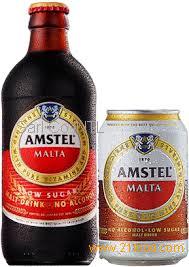

In the United Kingdom Amstel Bier is 4.1% ABV, and 4.0% ABV in Mexico. Amstel Light is a 3.5% Alcohol by Volume (ABV) pale lager sold in the USA and The Netherlands, a 2.5% ABV variant sold in New Zealand.

Amstel Lager uses predominantly light pilsner malt, although some dark malt is also used. Heineken offers several beers under the Amstel brand. Only the former administration building was kept and has since become part of the Hogeschool van Amsterdam.Īt the end of the 20th century, in Spain, Heineken International decided to replace the local centennial brand El Águila and convert it into Amstel. The building on the Mauritskade was torn down. In 1972 the Amstel Brewery in Amsterdam was closed and production was relocated to the main Heineken plant in Zoeterwoude. 1963 saw the opening of two new breweries, one in Puerto Rico and one in Greece.Īmstel was bought out by Heineken International in 1968. In 1960, the third subsidiary of Amstel was opened in Curaçao. In 1958 a subsidiary of Amstel produced its first beer in Jordan. At this time, the total exports of Amstel beer amounted to 101,000 hectoliters. A few years later, Amstel was the first Dutch brewery to export beer in cans. In 1954, Amstel built a brewery in Dutch Guiana. In 1941, Amstel, together with Heineken, bought up the Amsterdam brewery Van Vollenhoven's Bierbrouwerij, which was closed in 1961. In 1915 the production of Amstel had increased twenty-fold and in 1926, Amstel consisted of a third of the Dutch beer exports. operating under the name Beiersch Bierbrouwerij De Amstel (Bavarian Beer Brewery De Amstel), was turned into a public limited company. On 1 January 1891 the firm De Pesters, Kooy & Co. In 1884 a special export bottling plant was built, where "tropical" beers for the Dutch East Indies and other overseas markets were pasteurised and packaged in metal kegs. As from 1883, Amstel beers were also exported to Great Britain and the Dutch East Indies.

Agents were appointed in towns along new railway lines. The expansion outside Amsterdam ran more or less parallel to the development of the Dutch railway network. Originally, Amstel beers were mostly drunk in Amsterdam.

For the purpose of storing the beer, winter ice from canals was kept in special double-walled cellars. At this time its annual brewing capacity was 10,000 hectoliters (220,000 imp gallons). The brewery was officially opened on 15 January 1872. The first brew was completed on 25 October 1871 and 2 + 1⁄ 2 months later, on 9 January 1872, the first beer was delivered to clients. The brewery's symbolic first stone was laid on 11 June 1870. The brewery was named after the Amstel River. Uhlenbroek's father owned a small sugar refinery in Amsterdam. De Pesters and Van Marwijk Kooy were brothers-in-law, both coming from very affluent Amsterdam families. The brewery was founded by Charles Antoine de Pesters (1842-1915), Johannes Hendrikus van Marwijk Kooy (1847-1916) and Willem Eduard Uhlenbroek (1839-1880). It was taken over by Heineken International in 1968, and the brewing plant closed down in 1982, with production moving to the main Heineken plant at Zoeterwoude. An advertisement for "Amstel super Stout" from 1922Īmstel Brewery ( Dutch: Amstelbrouwerij, Dutch pronunciation: ) is a Dutch brewery founded in 1870 on the Mauritskade in Amsterdam. Amstel Bier sign, Arnhem Open Air Museum Former Amstel Brewery in the Netherlands, now a school.


 0 kommentar(er)
0 kommentar(er)
